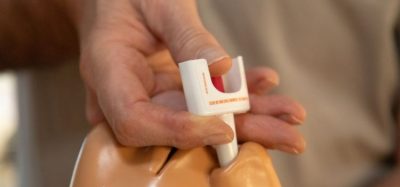New FDA medical device framework to improve women’s health
Posted: 19 January 2022 | Hannah Balfour (European Pharmaceutical Review) | No comments yet
The FDA’s Center for Devices and Radiological Health releases its strategic plan to improve medical device research and regulation for women.


The US Food and Drug Administration (FDA)’s Center for Devices and Radiological Health (CDRH) has shared its Health of Women Program Strategic Plan, setting out a framework to protect and promote the health of women by strengthening regulatory science and identifying and addressing current and emerging issues in medical device research and regulation for the health of all women.
Upon the release, Dr Terri Cornelison, Chief Medical Officer and Director, Health of Women Program at CDHR stated: “As scientists and the medical community continue to learn more about sex and gender differences, we are learning that both sex – an individual’s biological characteristics – and gender – the social construct by which one may define oneself – may play significant roles in the course and outcome of conditions that affect all human organ systems. While sex and gender are interrelated, they are not necessarily mutually exclusive, and their interactions may affect physiological reactions, presentation of disease and treatment outcomes.
“Now more than ever, we need to understand the implications sex and gender present for the performance of medical devices in all individuals. The CDRH Health of Women program is a comprehensive, collaborative, landmark programme built on the premise that both sex and gender have a considerable impact on a woman’s overall health, not just their reproductive or sexual health. With patients at the heart of this initiative, and with the strategic plan as a blueprint for the centre’s priorities, Health of Women intends to ensure all women have access to innovative, safe and effective medical devices.”
The CDRH Health of Women program was created in 2016 to address sex- and gender-specific issues arising from medical technology design and development, clinical trial design and other medical device-related matters. Since its inception it has worked to further the understanding of how medical devices developed both specifically for women and for people of all sexes and genders perform in women, as well as explore the unique issues in the regulation of medical devices related to the health of women.
Historically, pre-clinical cell research, animal studies and clinical research has overwhelmingly been conducted in patients assigned as male at birth. Dr Cornelison asserted: “Representation in research is crucial to understand how medical products, including medical devices, interact with individuals of different sexes and genders. A lack of representation can have serious consequences for health outcomes for women. An example of this is cardiovascular devices like pacemakers that may have different outcomes and complication rates in men and women. This is just one instance of when sex and gender make a difference in designing a clinical study that will provide optimal results for safety and effectiveness for all patients.”
Based on the understanding that sex and gender differences factor into a person’s unique experience with medical devices and treatment outcomes, the CDRH Health of Women Program created its strategic plan in 2019. They have since gathered and incorporated feedback from the public and other stakeholders to finalise the framework.
The strategic plan lays out the programme’s three main priorities:
- Sex- and Gender-Specific Analysis & Reporting – Improve the availability, analysis and communication of sex- and gender-specific information for the safe and effective use of medical devices to improve and better understand the performance of medical devices in women; optimize CDRH practices for consistent sex- and gender-specific data collection, analysis and reporting; ensure CDRH’s policies evolve with current science.
- Integrated Approach for Current & Emerging Issues Related to the Health of Women – Strengthen internal health science programmes and initiatives across CDRH, working together with CDRH offices and our stakeholders, to create actions that aim to improve the overall health and quality of life for women; co-ordinate and lead an integrated approach to analyse current and emerging issues related to the health of women; explore innovative strategies, technologies and device-specific study paradigms; develop centre-wide policies and outreach activities related to the health of women.
- Research Roadmap – Develop a guide for navigating the health of women medical device ecosystem; address identified gaps and unmet needs related to the health of women through targeted resources; promote advancement of regulatory science related to the health of women.
Dr Cornelison concluded: “With the implementation of these three strategic priorities, we aim to deepen our understanding of how medical devices work for women and continue our efforts to help assure that medical devices – those developed specifically for women, and those developed for all people – optimally align with the considerations of usability and performance in women. In this way, we hope to achieve the highest quality of innovation, safety and effectiveness for every patient.”
Related topics
Clinical Trials, Drug Development, Drug Safety, Medical Devices, Regulation & Legislation, Research & Development (R&D), Technology
Related organisations
US FDA Center for Devices and Radiological Health (CDRH), US Food and Drug Administration (FDA)









